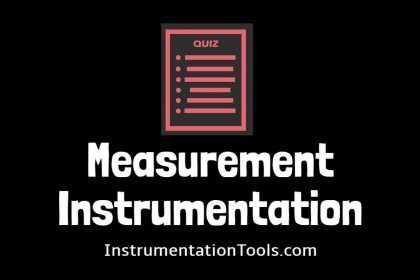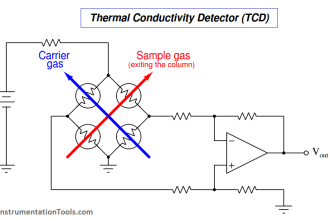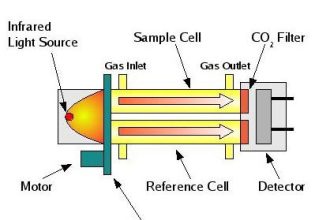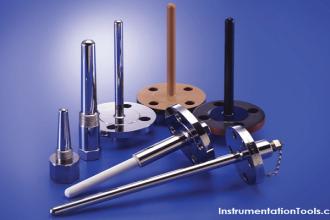Explore the top 100 vibration analysis questions and answers for understanding vibration monitoring basics and machine diagnostics.
Vibration Analysis
This video provides the detailed explanations for the 50 questions and answers on the basic vibration analysis.
Question 1
What is the heavy point in vibration analysis?
A. The point where maximum weight is concentrated
B. The point of maximum vibration amplitude
C. The point with the highest acceleration
D. The point with the greatest frequency
Show the Answer
The point where maximum weight is concentrated
Question 2
How does unbalance affect a rotating object?
A. Causes steady rotation with minimal vibration
B. Leads to excessive vibration and noise
C. Reduces rotational speed significantly
D. Enhances the efficiency of the rotation
Show the Answer
Leads to excessive vibration and noise
Question 3
What is a subharmonic frequency?
A. A frequency lower than the fundamental frequency
B. A frequency higher than the fundamental frequency
C. The same as the fundamental frequency
D. A frequency that is double the fundamental frequency
Show the Answer
A frequency lower than the fundamental frequency
Question 4
How is the Discrete Fourier Transform used in vibration analysis?
A. It amplifies the signal
B. It converts a time-domain signal to its frequency-domain form
C. It filters out noise in the signal
D. It converts a frequency-domain signal back to time-domain form
Show the Answer
It converts a time-domain signal to its frequency-domain form
Question 5
What is displacement in vibration analysis?
A. The maximum speed of a vibrating object
B. The total distance traveled by a vibrating object
C. The change in position of a vibrating object
D. The force exerted by a vibrating object
Show the Answer
The change in position of a vibrating object
Question 6
What is phase in vibration signals?
A. The time addition between two waveforms
B. The time difference between two waveforms
C. The maximum amplitude of the vibration
D. The frequency of the vibration wave
Show the Answer
The time difference between two waveforms
Question 7
What is a Hanning window used for in vibration analysis?
A. To increase signal frequency
B. To reduce spectral leakage by smoothing the signal
C. To amplify low-frequency components
D. To filter out high-frequency noise
Show the Answer
To reduce spectral leakage by smoothing the signal
Question 8
How is Fast Fourier Transform (FFT) used in vibration analysis?
A. It amplifies high-frequency components
B. It converts time-domain data to frequency-domain data
C. It filters out low-frequency noise
D. It converts frequency-domain data back to time-domain data
Show the Answer
It converts time-domain data to frequency-domain data
Question 9
How is phase difference important in vibration analysis?
A. Indicates the magnitude of vibration
B. Helps identify timing differences between signals
C. Measures the noise in a system
D. Determines the energy of the vibration
Show the Answer
Helps identify timing differences between signals
Question 10
What does amplitude measure in vibration analysis?
A. The frequency of a signal
B. The energy of a vibration
C. The magnitude of displacement, velocity, or acceleration
D. The time duration of a vibration
Show the Answer
The magnitude of displacement, velocity, or acceleration
Question 11
How is Power Spectral Density (PSD) used in vibration analysis?
A. To measure signal amplitude over time
B. To identify frequency components with respect to power
C. To convert time-domain signals into digital form
D. To isolate transient events in a signal
Show the Answer
To identify frequency components with respect to power
Question 12
What is noise in vibration signals?
A. High-frequency components of the signal
B. Unwanted or irrelevant variations in the signal
C. Low-amplitude oscillations
D. The fundamental frequency of the vibration
Show the Answer
Unwanted or irrelevant variations in the signal
Question 13
What are harmonics in vibration analysis?
A. Frequencies lower than the fundamental frequency
B. Integral multiples of the fundamental frequency
C. Frequencies unrelated to the fundamental
D. The base frequency in a signal
Show the Answer
Integral multiples of the fundamental frequency
Question 14
What is spectral leakage in frequency analysis?
A. A broadening of frequency peaks
B. A narrowing of frequency peaks
C. The complete elimination of certain frequencies
D. The amplification of specific frequencies
Show the Answer
A broadening of frequency peaks
Question 15
What does time waveform analysis reveal in vibration data?
A. The energy content of a signal
B. The changes in signal amplitude over time
C. The frequency components of the signal
D. The phase relationship between signals
Show the Answer
The changes in signal amplitude over time
Question 16
How is acceleration relevant in vibration analysis?
A. It measures the rate of displacement change
B. It is unrelated to vibration analysis
C. It measures the frequency of vibration
D. It quantifies the total energy in a vibrating object
Show the Answer
It measures the rate of displacement change
Question 17
What is an accelerometer used for?
A. Measuring rotational speed
B. Detecting temperature variations
C. Measuring vibration levels
D. Measuring the thickness of materials
Show the Answer
Measuring vibration levels
Question 18
What role does a gyroscope play in vibration analysis?
A. It measures temperature changes
B. It measures angular velocity or rotational movement
C. It detects linear acceleration
D. It amplifies low-frequency vibrations
Show the Answer
It measures angular velocity or rotational movement
Question 19
What is the significance of sensor placement in vibration analysis?
A. It affects the signal amplitude
B. It has no impact on measurement accuracy
C. It is only important for temperature sensors
D. It determines the frequency of the vibration signal
Show the Answer
It affects the signal amplitude
Question 20
What are MEMS sensors in vibration analysis?
A. Sensors for measuring large-scale vibrations
B. Small, precise sensors based on microelectromechanical systems
C. Sensors used only for temperature measurement
D. Sensors that convert digital signals to analog
Show the Answer
Small, precise sensors based on microelectromechanical systems
Question 21
What is misalignment in machinery?
A. When machine components are perfectly aligned
B. When machine components do not share a common axis
C. When machine components rotate at different speeds
D. When machine components vibrate at their natural frequency
Show the Answer
When machine components do not share a common axis
Question 22
How is balancing achieved in rotating machinery?
A. By matching rotational speeds
B. By ensuring mass is evenly distributed around the axis
C. By reducing the speed of rotation
D. By isolating the machinery from its surroundings
Show the Answer
By ensuring mass is evenly distributed around the axis
Question 23
What does a balanced condition indicate in vibration analysis?
A. Machinery is running at its highest speed
B. There are no significant unbalanced forces causing vibration
C. The machinery is free from wear and tear
D. The machinery is running in a vacuum
Show the Answer
There are no significant unbalanced forces causing vibration
Question 24
What is gear mesh frequency, and why is it important?
A. The rate of gear tooth engagement
B. The frequency at which gears slip
C. The speed at which gears rotate
D. The time between gear engagements
Show the Answer
The rate of gear tooth engagement
Question 25
What is an order in vibration analysis?
A. A measure of signal amplitude
B. A harmonic frequency related to the rotating speed of machinery
C. The maximum frequency component in a signal
D. The time duration of a vibration
Show the Answer
A harmonic frequency related to the rotating speed of machinery
Question 26
What is mechanical looseness in machinery?
A. When components are tightly fixed
B. When components have excessive clearance or play
C. When components are aligned perfectly
D. When components vibrate in sync
Show the Answer
When components have excessive clearance or play
Question 27
What is mechanical eccentricity in rotating machinery?
A. The perfect alignment of rotating parts
B. The use of non-circular components in rotation
C. The offset between the center of rotation and geometric center
D. The intentional imbalance in machinery
Show the Answer
The offset between the center of rotation and geometric center
Question 28
What is mechanical secretion in vibration analysis?
A. A type of fluid leak in machinery
B. A form of solid buildup in rotating parts
C. A false term; it does not exist in vibration analysis
D. The release of gas from mechanical seals
Show the Answer
A false term; it does not exist in vibration analysis
Question 29
What is harmonic balancing in rotating machinery?
A. Balancing by adjusting rotational speed
B. Balancing by eliminating higher-order vibrations
C. Balancing by adding weights to counter mass imbalances
D. Balancing by adjusting axial load
Show the Answer
Balancing by eliminating higher-order vibrations
Question 30
What is vibration spectrum analysis?
A. Analyzing temperature changes in machinery
B. Examining the frequency content of vibration signals
C. Assessing the amplitude of time-domain signals
D. Monitoring the phase relationship between signals
Show the Answer
Examining the frequency content of vibration signals
Question 31
How does Time Synchronous Averaging (TSA) work in vibration analysis?
A. By averaging the time intervals between vibrations
B. By averaging vibration data synchronized with the rotational speed
C. By filtering out high-frequency noise from the signal
D. By amplifying the low-frequency components
Show the Answer
By averaging vibration data synchronized with the rotational speed
Question 32
What is phase-resolved analysis in vibration monitoring?
A. Analyzing the amplitude of vibration signals
B. Assessing vibration data in relation to the phase of rotation
C. Filtering out irrelevant noise from vibration signals
D. Converting time-domain data into frequency-domain data
Show the Answer
Assessing vibration data in relation to the phase of rotation
Question 33
What is modal analysis used for in vibration studies?
A. To measure the temperature changes in machinery
B. To determine the vibration modes and natural frequencies
C. To assess the lubrication levels in bearings
D. To monitor the electrical signals in motors
Show the Answer
To determine the vibration modes and natural frequencies
Question 34
What is mode shape in vibration analysis?
A. The highest point of vibration
B. The pattern of displacement that a structure undergoes during vibration
C. The rate at which vibration frequency changes
D. The time duration of a vibration cycle
Show the Answer
The pattern of displacement that a structure undergoes during vibration
Question 35
What is modal damping, and why is it important?
A. The process of amplifying vibration signals
B. The reduction of vibration amplitude through energy dissipation
C. The increase in frequency response
D. The method of synchronizing phase angles
Show the Answer
The reduction of vibration amplitude through energy dissipation
Question 36
What is condition monitoring in predictive maintenance?
A. Monitoring only temperature and pressure
B. Regularly checking and analyzing machinery conditions to predict failures
C. Only inspecting machinery after failures occur
D. Relying solely on historical maintenance data
Show the Answer
Regularly checking and analyzing machinery conditions to predict failures
Question 37
How does condition-based maintenance (CBM) use vibration data?
A. By scheduling maintenance based on preset intervals
B. By responding only after machinery failure
C. By analyzing vibration data to determine maintenance needs
D. By ignoring vibration data and focusing on temperature
Show the Answer
By analyzing vibration data to determine maintenance needs
Question 38
How is thermography used in vibration analysis?
A. By analyzing sound waves
B. By monitoring electrical signals
C. By measuring temperature variations in machinery
D. By converting vibration signals into heat maps
Show the Answer
By measuring temperature variations in machinery
Question 39
What is ultrasonic testing in machinery maintenance?
A. A method to measure airflow
B. A technique to detect high-frequency sound waves
C. A process to inspect material thickness
D. A method to detect small cracks or defects in machinery
Show the Answer
A method to detect small cracks or defects in machinery
Question 40
What is a baseline spectrum in vibration monitoring?
A. A measurement of vibration at rest
B. The initial vibration measurement used for future comparison
C. A high-frequency noise filter
D. The average vibration level over time
Show the Answer
The initial vibration measurement used for future comparison
Question 41
What is a trend in vibration analysis?
A. A single peak in vibration amplitude
B. A consistent change in vibration data over time
C. The highest frequency component in a vibration signal
D. A sudden drop in vibration levels
Show the Answer
A consistent change in vibration data over time
Question 42
What are oil whirl and oil whip in bearing analysis?
A. Conditions where lubrication prevents wear
B. High-speed vibrations due to instability in the oil film
C. Processes that cool the bearings
D. Types of wear on the bearing surface
Show the Answer
High-speed vibrations due to instability in the oil film
Question 43
What is harmonic analysis in vibration studies?
A. Analysis of noise levels
B. Analysis of phase differences
C. Analysis of multiples of a fundamental frequency
D. Analysis of random signal components
Show the Answer
Analysis of multiples of a fundamental frequency
Question 44
What is resonance in vibration analysis?
A. A decrease in vibration amplitude
B. A condition where the natural frequency matches the excitation frequency
C. A type of damping that reduces vibration
D. A form of vibration insulation
Show the Answer
A condition where the natural frequency matches the excitation frequency
Question 45
What are critical speeds in rotating machinery?
A. The maximum operational speed
B. The speed at which maximum vibration occurs
C. The minimum operational speed
D. The speed at which no vibrations occur
Show the Answer
The speed at which maximum vibration occurs
Question 46
What is a criticality index in machinery maintenance?
A. A measure of machine cost
B. A metric to prioritize maintenance based on machine importance
C. A factor indicating energy efficiency
D. A score for noise levels
Show the Answer
A metric to prioritize maintenance based on machine importance
Question 47
What is the crest factor in vibration signals?
A. The ratio of peak amplitude to RMS value
B. The total energy of the vibration signal
C. The frequency of the highest peak
D. The average amplitude of the vibration signal
Show the Answer
The ratio of peak amplitude to RMS value
Question 48
What is enveloping in vibration analysis?
A. A method to filter out high frequencies
B. A technique to detect repetitive impacts in vibration signals
C. A way to smooth out the vibration signal
D. A process to increase signal amplitude
Show the Answer
A technique to detect repetitive impacts in vibration signals
Question 49
What is transient vibration?
A. Constant vibration over time
B. Vibration that occurs in response to a sudden force
C. Vibration that builds up gradually
D. Vibration that is always present
Show the Answer
Vibration that occurs in response to a sudden force
Machine Condition Monitoring Questions
The following video explains the answers for the remaining condition monitoring questions.
Question 50
What is the frequency response function (FRF)?
A. A measure of amplitude over time
B. A function that describes how a system responds to varying frequencies
C. A method to increase system damping
D. A filter for removing noise from signals
Show the Answer
A function that describes how a system responds to varying frequencies
Question 51
What is non-destructive testing (NDT) in vibration analysis?
A. Testing that does not damage the equipment
B. A method to analyze chemical properties
C. Testing that requires dismantling machinery
D. A technique to assess machine appearance
Show the Answer
Testing that does not damage the equipment
Question 52
What is a vibration signature in machinery monitoring?
A. A brief spike in vibration amplitude
B. The average vibration level over time
C. The overall noise level of the machinery
D. A unique pattern of vibrations associated with specific machinery
Show the Answer
A unique pattern of vibrations associated with specific machinery
Question 53
What is a Bode plot in vibration analysis?
A. A graph showing the relationship between frequency and amplitude
B. A chart of phase angle versus frequency
C. A plot of speed versus time
D. A plot showing temperature changes over time
Show the Answer
A graph showing the relationship between frequency and amplitude
Question 54
What is a condition indicator in vibration monitoring?
A. A device that measures temperature
B. A tool for amplifying vibrations
C. A parameter that suggests equipment’s health
D. A machine’s operating manual
Show the Answer
A parameter that suggests equipment’s health
Question 55
What is vibration monitoring in industries?
A. A technique to reduce noise pollution
B. A process to increase machine speed
C. A system for controlling fluid flow
D. A method to continuously track vibration levels in machinery
Show the Answer
A method to continuously track vibration levels in machinery
Question 56
What are degrees of freedom in mechanical vibrations?
A. The frequency of oscillations
B. The number of independent movements possible
C. The maximum speed of vibration
D. The total energy of a vibrating system
Show the Answer
The number of independent movements possible
Question 57
What is free vibration in mechanical systems?
A. Vibration caused by external forces
B. Vibration only at high frequencies
C. Vibration that occurs without external forces
D. Vibration that is constant over time
Show the Answer
Vibration that occurs without external forces
Question 58
What is damping in vibration analysis?
A. The increase in vibration frequency
B. The reduction of vibration amplitude over time
C. The increase in vibration speed
D. The amplification of vibration
Show the Answer
The reduction of vibration amplitude over time
Question 59
What is metal fatigue in vibration analysis?
A. A reduction in metal density
B. A change in metal’s magnetic properties
C. The increase in metal hardness
D. The weakening of metal due to repeated stress cycles
Show the Answer
The weakening of metal due to repeated stress cycles
Question 60
What is radial vibration in rotating machinery?
A. Vibration along the axis of rotation
B. Vibration perpendicular to the axis of rotation
C. Vibration that is stable and uniform
D. Vibration that occurs at very high frequencies
Show the Answer
Vibration perpendicular to the axis of rotation
Question 61
What is the natural frequency of a system?
A. The frequency at which a system oscillates when disturbed
B. The frequency required to maintain oscillation
C. The highest frequency of an external force
D. The lowest frequency at which resonance occurs
Show the Answer
The frequency at which a system oscillates when disturbed
Question 62
What is the purpose of vibration damping in mechanical systems?
A. To measure vibration frequency
B. To maintain the system at resonance
C. To amplify vibrations
D. To reduce the amplitude of vibrations
Show the Answer
To reduce the amplitude of vibrations
Question 63
What is the role of a spectral analyzer in vibration analysis?
A. It measures the vibration in real-time
B. It analyzes the frequency content of a vibration signal
C. It calculates the natural frequency
D. It performs modal analysis
Show the Answer
It analyzes the frequency content of a vibration signal
Question 64
What is a mode shape in the context of vibration analysis?
A. The pattern of deformation at a particular natural frequency
B. The shape a system takes under static load
C. The design shape that minimizes vibration
D. The shape of the external force causing vibration
Show the Answer
The pattern of deformation at a particular natural frequency
Question 65
What is the purpose of balancing in vibration analysis?
A. To distribute the mass evenly in rotating machinery
B. To eliminate all vibrations in the system
C. To reduce the natural frequency
D. To increase the system’s damping
Show the Answer
To distribute the mass evenly in rotating machinery
Question 66
What is critical speed in the rotating machinery?
A. The speed at which resonance occurs
B. The maximum allowable speed of a machine
C. The speed that minimizes vibration
D. The speed at which machinery operates most efficiently
Show the Answer
The speed at which resonance occurs
Question 67
Which of the following is a common indicator of imbalance in rotating machinery?
A. High-frequency vibration
B. Axial vibration with varying frequency
C. Low vibration amplitude
D. Radial vibration at a frequency equal to rotational speed
Show the Answer
Radial vibration at a frequency equal to rotational speed
Question 68
What is a common cause of misalignment in machinery?
A. Uniform temperature distribution
B. Uneven foundation or improper installation
C. Excessive lubrication
D. Proper installation
Show the Answer
Uneven foundation or improper installation
Question 69
What is the primary effect of adding damping to a vibratory system?
A. It changes the system’s mode shape
B. It amplifies the vibrations
C. It reduces the amplitude of vibrations
D. It increases the natural frequency
Show the Answer
It reduces the amplitude of vibrations
Question 70
What does the term “modal analysis” refer to in vibration analysis?
A. Analyzing vibration in the time domain
B. Measuring vibration amplitude over time
C. Determining the damping ratio of a system
D. Identifying natural frequencies and mode shapes
Show the Answer
Identifying natural frequencies and mode shapes
Question 71
What is the role of an orbit plot in vibration analysis?
A. To map the path of shaft centerline motion
B. To determine the amplitude of vibration
C. To identify the natural frequency of a system
D. To show the frequency spectrum of a vibration signal
Show the Answer
To map the path of shaft centerline motion
Question 72
What is typically the first step in conducting a vibration analysis on machinery?
A. Adjusting the damping ratio
B. Balancing the rotor
C. Measuring the baseline vibration levels
D. Applying lubrication
Show the Answer
Measuring the baseline vibration levels
Question 73
What is the main advantage of using a time-domain analysis in vibration analysis?
A. It shows the system’s natural frequencies
B. It provides a clear frequency spectrum
C. It captures transient events and changes over time
D. It identifies mode shapes directly
Show the Answer
It captures transient events and changes over time
Question 74
How does temperature variation typically affect vibration analysis in machinery?
A. It has no significant impact
B. It amplifies vibration amplitudes
C. It increases the damping ratio
D. It changes the system’s natural frequency
Show the Answer
It changes the system’s natural frequency
Question 75
What is a waterfall plot used for in vibration analysis?
A. To map orbit plots for rotating machinery
B. To track changes in frequency spectrum over time
C. To display vibration amplitude over time
D. To identify the mode shapes of a system
Show the Answer
To track changes in frequency spectrum over time
Question 76
How does excessive clearance in a mechanical system typically manifest in vibration data?
A. High-frequency vibrations
B. Increased amplitude at natural frequency
C. Low-frequency vibration with impacts
D. Stable vibration patterns
Show the Answer
Low-frequency vibration with impacts
Question 77
What is the primary purpose of conducting a frequency-domain analysis in vibration analysis?
A. To map the shaft orbit
B. To measure vibration amplitude directly
C. To observe time-dependent behavior
D. To identify specific frequencies causing vibration
Show the Answer
To identify specific frequencies causing vibration
Question 78
In vibration analysis, what does a high peak in the frequency spectrum at the operating speed of the machine typically indicate?
A. Imbalance
B. Misalignment
C. Bearing wear
D. Resonance
Show the Answer
Imbalance
Question 79
What does the term “Harmonic” refer to in vibration analysis?
A. The natural frequency of a system
B. The maximum amplitude of a vibration
C. Frequencies that are multiples of a fundamental frequency
D. The fundamental frequency of a system
Show the Answer
Frequencies that are multiples of a fundamental frequency
Question 80
What is the primary cause of sidebands in a vibration spectrum?
A. Modulation of a primary vibration frequency
B. Electrical interference
C. Excessive lubrication
D. Bearing misalignment
Show the Answer
Modulation of a primary vibration frequency
Question 81
What does “runout” refer to in the rotating machinery?
A. The misalignment of the shaft
B. The wear of bearings
C. The deviation of the shaft from its true rotational axis
D. The decrease in performance over time
Show the Answer
The deviation of the shaft from its true rotational axis
Question 82
What type of vibration is typically associated with gear mesh issues?
A. High-frequency vibration with harmonics
B. Radial vibration at the natural frequency
C. Low-frequency vibration with sidebands
D. Axial vibration at the operating frequency
Show the Answer
High-frequency vibration with harmonics
Question 83
How does imbalance in rotating machinery typically affect vibration in the radial direction?
A. It causes vibration at twice the rotational frequency
B. It reduces vibration amplitude
C. It stabilizes the vibration pattern
D. It leads to vibration at the operating frequency
Show the Answer
It leads to vibration at the operating frequency
Question 84
Why is velocity important in vibration analysis?
A. It measures the energy of the vibration
B. It directly correlates to the vibration’s amplitude
C. It is used only in electrical systems
D. It provides information on the potential damage the vibration may cause
Show the Answer
It provides information on the potential damage the vibration may cause
Question 85
How is acceleration used in vibration analysis?
A. To identify the natural frequency
B. To measure displacement directly
C. To assess high-frequency vibrations and potential impact
D. To balance rotating components
Show the Answer
To assess high-frequency vibrations and potential impact
Question 86
What does natural frequency refer to in vibration analysis?
A. The frequency at which a system naturally oscillates
B. The frequency needed to suppress vibrations
C. The speed at which the system stabilizes
D. The frequency of the external force applied
Show the Answer
The frequency at which a system naturally oscillates
Question 87
What does the spectrum represent in vibration analysis?
A. The vibration pattern in real-time
B. The amplitude of vibration over time
C. The distribution of vibration energy across frequencies
D. The time it takes for vibration to decay
Show the Answer
The distribution of vibration energy across frequencies
Question 88
How is RMS (Root Mean Square) relevant to vibration analysis?
A. It provides a statistical measure of the vibration’s overall energy
B. It calculates the time interval between vibrations
C. It measures the peak amplitude of vibrations
D. It averages the frequency components of a signal
Show the Answer
It provides a statistical measure of the vibration’s overall energy
Question 89
What does peak-to-peak measurement indicate in vibration analysis?
A. The total time of a vibration cycle
B. The frequency of the vibration
C. The difference between the maximum and minimum displacement
D. The difference between the maximum and minimum time
Show the Answer
The difference between the maximum and minimum displacement
Question 90
How does imbalance affect vibration analysis results?
A. It leads to high-frequency vibrations
B. It reduces overall vibration levels
C. It eliminates the need for further analysis
D. It causes consistent vibration at the rotational speed
Show the Answer
It causes consistent vibration at the rotational speed
Question 91
How are bearing defects identified through vibration analysis?
A. By detecting high-frequency vibration with harmonics and sidebands
B. By measuring low-frequency vibrations
C. By observing constant amplitude vibrations
D. By identifying reduced vibration at natural frequency
Show the Answer
By detecting high-frequency vibration with harmonics and sidebands
Question 92
What is gear mesh frequency, and why is it important in vibration analysis?
A. The frequency at which gear teeth engage and disengage
B. The frequency of shaft rotation
C. The voltage at which gear teeth engage and disengage
D. The fundamental frequency of the machine
Show the Answer
The frequency at which gear teeth engage and disengage
Question 93
Which parameter is crucial for diagnosing bearing faults in vibration analysis?
A. Electrical impedance
B. Frequency spectrum
C. Phase angle
D. Displacement amplitude
Show the Answer
Frequency spectrum
Question 94
How can vibration analysis help in identifying gear wear?
A. By measuring oil viscosity
B. By checking electrical current
C. By detecting harmonic frequency peaks
D. By monitoring temperature changes
Show the Answer
By detecting harmonic frequency peaks
Question 95
What role does phase analysis play in vibration troubleshooting?
A. Identifying temperature fluctuations
B. Determining the direction of the vibration source
C. Measuring electrical impedance
D. Assessing fluid dynamics
Show the Answer
Determining the direction of the vibration source
Question 96
Why is trending data important in vibration analysis for troubleshooting?
A. It helps identify electrical issues
B. It provides historical context for changes in vibration patterns
C. It monitors oil condition
D. It measures current flow
Show the Answer
It provides historical context for changes in vibration patterns
Question 97
How does vibration analysis assist in detecting cavitation in pumps?
A. By checking for electrical disturbances
B. By monitoring temperature changes
C. By measuring fluid viscosity
D. By detecting irregular frequency patterns
Show the Answer
By detecting irregular frequency patterns
Question 98
Which factor is most critical when using vibration analysis to troubleshoot looseness?
A. Consistency in vibration amplitude
B. Displacement amplitude
C. Phase stability
D. Frequency range
Show the Answer
Consistency in vibration amplitude
Question 99
What is the benefit of using time waveform analysis in vibration troubleshooting?
A. It captures transient events
B. It improves temperature monitoring
C. It simplifies data storage
D. It reduces overall noise levels
Show the Answer
It captures transient events
Question 100
Why is baseline vibration data important in troubleshooting?
A. It helps in determining electrical faults
B. It assists in chemical analysis of materials
C. It aids in visual inspection
D. It provides a reference for normal operating conditions
Show the Answer
It provides a reference for normal operating conditions
Read Next:
- Vibration System Troubleshooting
- Questions on Vibration Measurement
- Vibration Switch Working Principle
- Importance of Vibration Measurement
- Vibration Probe Commissioning Checklist
















